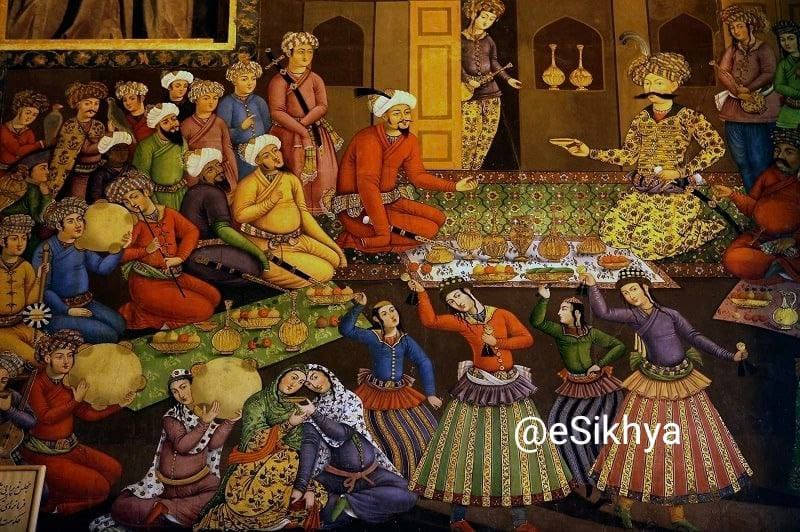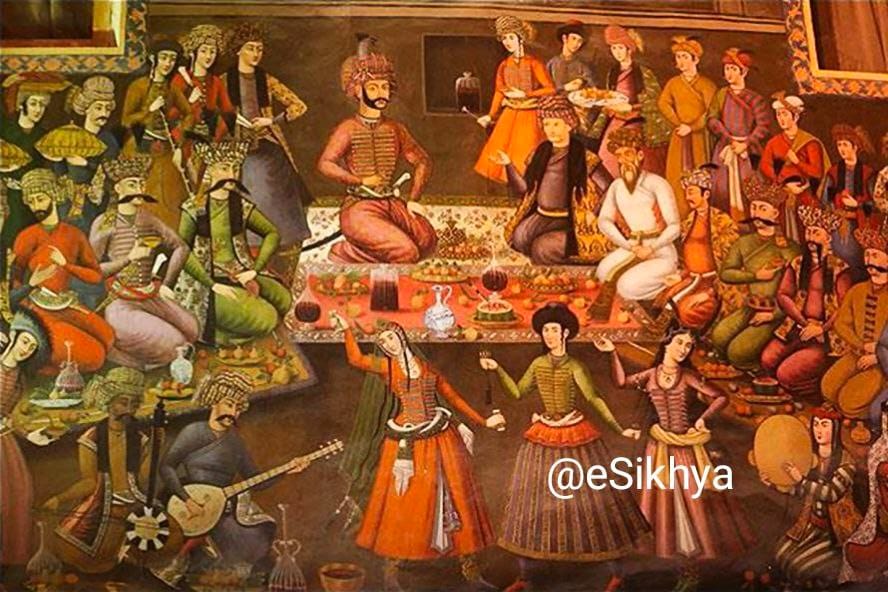Syncretic Traddition of Pre-Colonial Indian Political Thought
The syncretic tradition of pre-colonial Indian political thought represents a unique blending of diverse religious, philosophical, and cultural ideas that shaped governance and society.

This tradition is most prominently observed during the Delhi Sultanate and the Mughal Empire, where Islamic rulers incorporated elements of Hindu, Buddhist, Jain, and indigenous practices into their political and administrative frameworks. This blending was driven by the need to govern a diverse population and foster stability and unity.
Key Factors of Syncretic Political Thought
1. Religious Tolerance and Inclusivity
- Sulh-i-Kul (Universal Peace): Akbar the Great (1542-1605) implemented the policy of Sulh-i-Kul, which promoted religious tolerance and inclusivity. He abolished the jizya tax on non-Muslims, engaged in interfaith dialogues, and included people of various faiths in his administration.
- Din-i-Ilahi (Religion of God): Akbar attempted to create a syncretic religion that combined elements from various faiths, including Islam, Hinduism, Zoroastrianism, and Christianity. Although it did not gain widespread acceptance, it symbolized his commitment to fostering religious harmony.
2. Integration of Administrative Practices
- Mansabdari System: This administrative system, established by Akbar, assigned ranks (mansabs) to both military and civilian officials, regardless of their religious or ethnic backgrounds. This inclusivity helped integrate different communities into the governance structure.
- Provincial Administration: The Mughal administration divided the empire into provinces (subahs), each governed by a Subahdar who was often selected based on merit rather than religion. This approach helped maintain efficient and inclusive governance.
3. Cultural and Intellectual Exchange
- Translation Movements: The Mughal court sponsored the translation of important Hindu texts such as the Mahabharata and Ramayana into Persian. This facilitated a deeper understanding and appreciation of Hindu culture among Muslim rulers and officials.
- Educational Institutions: Madrasas and other educational institutions often included curricula that covered both Islamic and local knowledge, promoting intellectual syncretism.
4. Architectural and Artistic Synthesis
- Mughal Architecture: Mughal architecture, such as the Taj Mahal, Fatehpur Sikri, and Humayun’s Tomb, reflects a blend of Islamic, Persian, and Indian architectural styles. This synthesis is seen in the use of domes, minarets, intricate carvings, and local materials.
- Miniature Paintings: Mughal miniature paintings incorporated Persian artistic techniques with Indian themes and styles, resulting in a unique form of artistic expression.
5. Philosophical and Ethical Contributions
- Akhlaq Literature: Ethical literature, known as Akhlaq, provided guidelines for personal conduct and governance. Texts like “Akhlaq-i-Nasiri” by Nasir al-Din Tusi emphasized virtues such as justice, wisdom, and courage for rulers, blending Islamic and local ethical traditions.
- Sufi Influence: Sufi mysticism played a significant role in shaping the spiritual and ethical outlook of rulers and subjects. Sufi saints often acted as mediators between the rulers and the populace, promoting social harmony and ethical governance.
Major Figures and Texts
- Abu’l-Fazl: Akbar’s court historian and author of “Ain-i-Akbari,” which documents the administrative, cultural, and social policies of Akbar’s reign, reflecting the syncretic approach to governance.
- Amir Khusrau: A poet, scholar, and musician who contributed to the cultural and intellectual life of the Delhi Sultanate, known for his works that blend Persian and Indian literary traditions.
- Dara Shikoh: A Mughal prince and scholar who translated the Upanishads and other Hindu scriptures into Persian, promoting a deeper understanding of Hindu philosophy among Muslims.
Influence and Legacy

- Administrative Innovations: The centralized administrative systems and inclusive practices introduced by Islamic rulers left a lasting impact on the governance structures in India, influencing subsequent colonial and post-colonial administration.
- Cultural Integration: The blending of Islamic and Indian cultural elements led to a rich and diverse cultural heritage, seen in literature, music, architecture, and language.
- Religious and Social Harmony: Policies promoting religious tolerance and inclusivity helped maintain social harmony and integrate diverse communities into the political framework.
- Intellectual Contributions: The philosophical and ethical literature produced during this period enriched the intellectual traditions of India, influencing later thinkers and reformers.
Conclusion
The syncretic tradition of pre-colonial Indian political thought exemplifies the blending of diverse cultural, religious, and philosophical ideas to create inclusive and effective governance. This tradition fostered social harmony, cultural richness, and intellectual growth, leaving a lasting legacy that continues to influence Indian society and political thought.
Share this content:



Leave a Reply